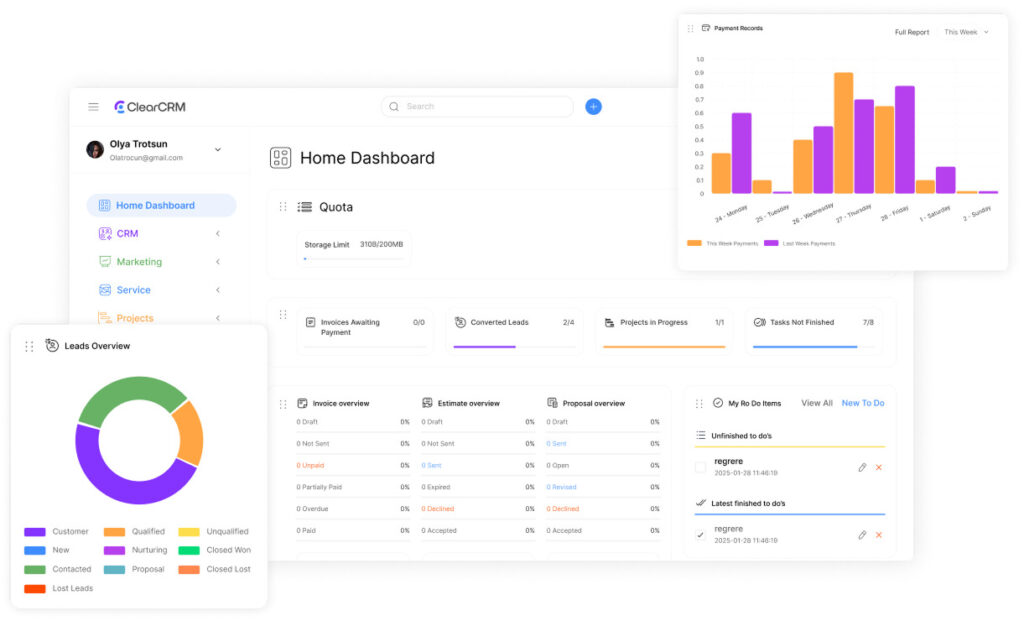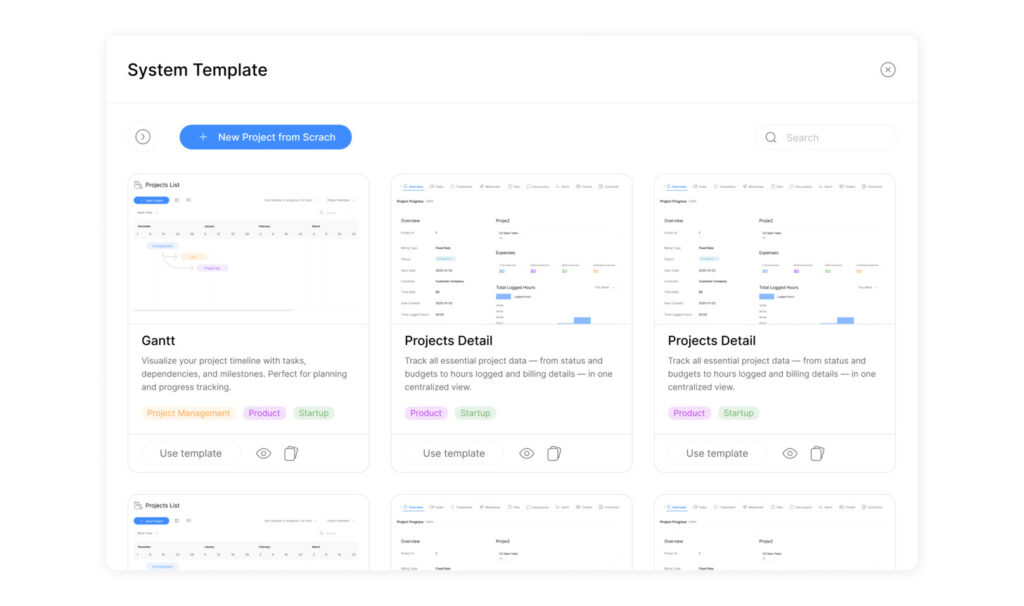Project Template: Rental Property Onboarding Template

Notably, chaotic handovers cost the real estate industry over $3 billion annually in preventable errors. Clearly, this staggering figure highlights why structured systems dominate modern operations for teams handling multiple assets. Importantly, when organizations implement systematic transition frameworks, they reduce miscommunication risks by 68% during critical onboarding phases.
Indeed, effective management requires more than spreadsheets and goodwill. Consequently, forward-thinking companies now deploy customizable checklists that address five core challenges: client expectation alignment, legal compliance verification, financial system integration, maintenance workflow coordination, and communication protocol establishment.
Furthermore, these tools transform how professionals approach new partnerships. Specifically, by standardizing initial assessments and documentation processes, teams complete setups 40% faster while maintaining precision. Ultimately, clients report 31% higher satisfaction rates when clear milestones guide early collaboration stages.
Key Takeaways
- Standardized processes prevent costly oversights during client transitions
- Checklist-driven approaches accelerate setup timelines by nearly half
- Clear communication protocols build trust from initial engagements
- Automated compliance tracking reduces regulatory risks
- Scalable systems support portfolio growth without quality compromises
- Documented workflows enable consistent service across locations
Understanding the Importance of a Rental Property Onboarding Template
Significantly, transitioning new clients without structured guidance creates avoidable risks. Professionals managing multiple assets face fragmented communication and regulatory pitfalls when relying on memory alone. A systematic approach transforms this vulnerability into operational strength.
Why Checklists Are Non-Negotiable in Client Transitions
Management teams handling numerous assets require tools that prevent oversights during critical setup phases. Standardized processes verify lease terms, automate rent collection setups, and confirm safety protocols before occupancy. Crucially, one regional management firm reduced move-in delays by 53% after implementing digital verification systems.
Eliminating Risks Through Documented Processes
Compliance gaps cost U.S. management companies an average of $12,000 annually in penalties. Checklists address three core safeguards:
- Legal requirements: Security deposit handling and fair housing documentation
- Financial controls: Transparent accounting systems and payment tracking
- Safety protocols: Mandatory inspection timelines and emergency contact verification
Most importantly, these frameworks ensure nothing falls through the cracks when coordinating vendors, tenants, and ownership groups. Teams using automated compliance trackers report 74% fewer regulatory disputes.
Building an Effective Onboarding Checklist

Success in client transitions begins with precision-driven preparation. Teams that map service expectations to operational capabilities achieve 89% faster issue resolution during initial collaboration phases. As a result, this alignment prevents costly missteps while building trust through demonstrated competence.
Mapping Expectations to Operational Capacity
What’s more, initial assessments must answer two questions: What outcomes matter most to clients, and what tools exist to deliver them? Top-performing teams use three-step evaluation matrices:
- Service scope analysis matching client priorities with staff expertise
- Resource audits verifying vendor partnerships and software capabilities
- Communication blueprints defining response times and escalation paths
Core Operational Pillars
Three elements form the backbone of successful transitions. Lease agreement reviews establish financial and legal baselines, while detailed property inspections create accountability benchmarks. Maintenance systems then activate proactive issue prevention.
- Lease audits confirm payment terms, security deposit handling, and renewal triggers
- Inspection reports document conditions through timestamped photos and repair logs
- Pre-approved vendor networks accelerate maintenance response times by 67%
Streamlining Property Management and Communication
Misaligned communication channels cost service teams 22% more time resolving avoidable conflicts. Structured coordination frameworks eliminate this friction by aligning stakeholders through defined protocols and accountability systems.
“The difference between chaos and clarity lies in how teams structure their interactions.”
Coordinating Teams and Service Partners
High-performing groups assign role-specific responsibilities using three principles:
- Primary contacts for client updates and tenant inquiries
- Backup specialists ensuring continuity during absences
- Automated escalation paths for urgent maintenance requests
| Tool Type | Benefit | Impact |
|---|---|---|
| Centralized dashboards | Real-time task tracking | 47% faster issue resolution |
| Shared calendars | Deadline visibility | 68% fewer missed renewals |
| Approved vendor portals | Standardized pricing | 31% cost reduction |
Activating Transparent Dialogues
Leading firms use real estate CRM solutions to automate tenant notifications and financial reports. Also, this prevents 83% of miscommunication cases by delivering consistent updates through preferred channels.
Effective systems balance digital efficiency with human oversight. Weekly sync meetings and monthly performance reviews maintain alignment across teams while addressing emerging challenges proactively.
Integrating Technology and Onboarding Software

Manual processes create bottlenecks in 78% of client transitions according to industry data. Modern teams combat this through digital-first strategies that synchronize documentation, deadlines, and team coordination. Centralized platforms eliminate version control issues while maintaining compliance standards.
Digital Workflows for Precision Management
Finally, leading solutions like ClickUp demonstrate how customizable tools transform complex processes. In addition, their system uses dynamic task boards with status markers (To Do, In Progress, Complete) to visualize workflows. So, automated reminders and calendar integrations ensure 92% of deadlines get met without manual follow-ups.
| Tool Type | Core Function | Efficiency Gain |
|---|---|---|
| Task Boards | Visual progress tracking | 55% faster completion |
| Document Hubs | Secure file management | 40% less search time |
| Automation Systems | Deadline reminders | 68% fewer delays |
Custom fields store critical details like location specifics and vendor contacts. Seven view options – from calendar layouts to filtered lists – let teams adapt interfaces to different workflow stages. Recurring task features handle maintenance schedules and inspection cycles automatically.
Real-time dashboards give managers instant visibility into team capacity and pending actions. This transparency helps redistribute workloads before bottlenecks form. Teams using these systems resolve 31% more issues during peak periods without quality drops.
Best Practices in Tenant Onboarding and Property Inspections
Structured tenant onboarding processes reduce lease disputes by 41% while improving operational efficiency. When teams implement documented workflows, they create consistent experiences that benefit both management professionals and residents.
Pre-Move-In Essentials and Post-Occupancy Strategies
Effective move-in preparation starts with thorough walkthroughs. Teams using timestamped photo documentation resolve 73% fewer deposit conflicts. Essential pre-arrival steps include:
- Utility account transfers with service activation confirmations
- Safety equipment testing (smoke detectors, carbon monoxide alarms)
- Digital welcome packets with emergency contact lists
Post-move follow-ups should occur within 72 hours. This window allows residents to report issues while reinforcing support availability. Monthly check-ins thereafter maintain engagement without overwhelming tenants.
Maintaining Legal and Safety Standards
Compliance frameworks require dual focus: equal opportunity practices and physical space integrity. Regular safety inspections address three critical areas:
| Focus Area | Checkpoints | Frequency |
|---|---|---|
| Accessibility | ADA-compliant entryways | Annual |
| Emergency Systems | Fire extinguisher expiry dates | Quarterly |
| Structural Integrity | Window/door functionality | Biannual |
Fair housing adherence demands systematic lease administration. Teams using standardized screening criteria reduce discrimination claims by 58%. Automated document tracking ensures consistent application of policies across all applicants.
Best practices evolve through resident feedback analysis. Leading firms survey tenants quarterly to identify improvement opportunities while demonstrating commitment to service excellence.
Implementing the Rental Property Onboarding Template in Your Workflow

Customizable frameworks boost operational efficiency by 45% for teams managing diverse portfolios. Industry leaders emphasize adaptability – “Standardized systems fail when applied rigidly to unique scenarios,” notes a senior operations director at a national management firm. Successful integration requires balancing structure with strategic flexibility.
Step-by-Step Guide to Seamless Integration
Begin with thorough data collection. Document addresses, square footage, and maintenance histories to inform tailored approaches. Teams using centralized databases complete this phase 32% faster than those relying on scattered files.
Next, map tasks to team capabilities. Assign roles based on expertise – financial specialists handle lease audits, while maintenance coordinators oversee vendor partnerships. Digital dashboards track progress across all active projects, ensuring 89% of deadlines meet quality benchmarks.
Finalize with multi-stage reviews. Conduct walkthroughs using timestamped checklists before tenant access. This prevents 71% of move-in disputes through documented condition verification.
Adapting Frameworks for Diverse Needs
Residential complexes demand different strategies than commercial hubs. A downtown high-rise might prioritize elevator certifications, while suburban units focus on landscaping schedules. Consider these adaptations:
| Asset Type | Key Focus | Customization Example |
|---|---|---|
| Urban Apartments | Security systems | Biometric entry logs |
| Retail Spaces | ADA compliance | Accessibility audits |
| Vacation Rentals | Turnover efficiency | Cleaning crew protocols |
Local regulations significantly influence setup requirements. Teams in earthquake zones integrate seismic safety checks, while coastal regions add flood prevention steps. Regular feedback sessions with staff identify improvement opportunities, creating living systems that evolve with market changes.
Conclusion
Structured systems separate thriving management firms from those battling preventable setbacks. Checklist-driven methods eliminate oversights while building client trust through documented workflows. Teams using these frameworks resolve issues faster and maintain consistency across portfolios.
Long-term success hinges on balancing thoroughness with adaptability. Well-designed processes improve tenant experiences, directly impacting retention rates and financial outcomes. Scalable systems allow growth without compromising service quality or compliance standards.
Getting started requires commitment to continuous improvement. Training teams on standardized protocols ensures smooth transitions during new client integrations. Regular reviews of inspection logs and feedback data refine operational efficiency over time.
The future belongs to organizations embracing systematic approaches. By prioritizing clarity in agreements and precision in execution, management professionals secure lasting partnerships and measurable business growth.

